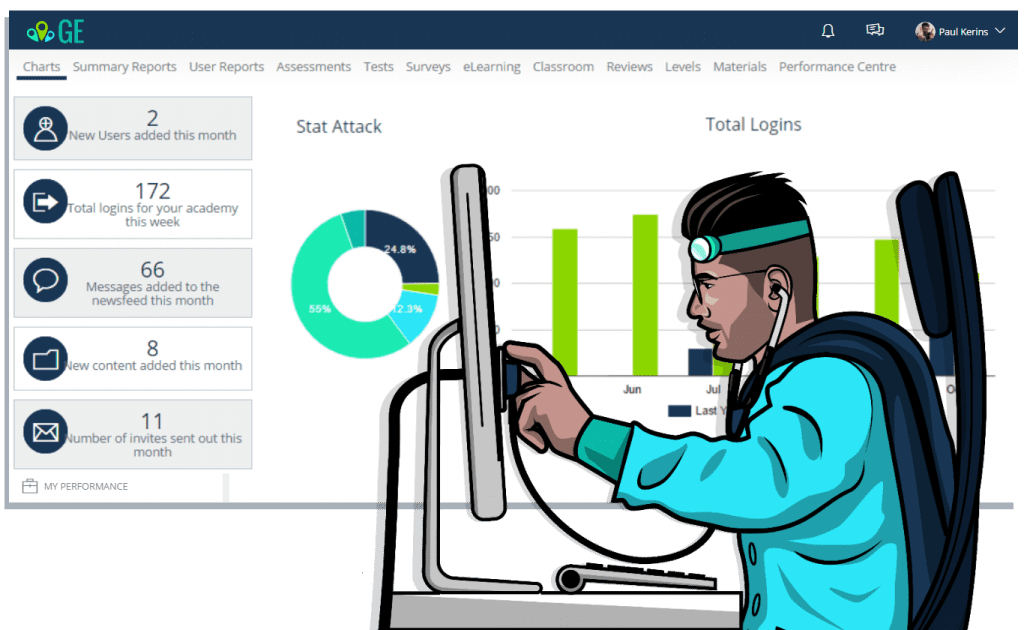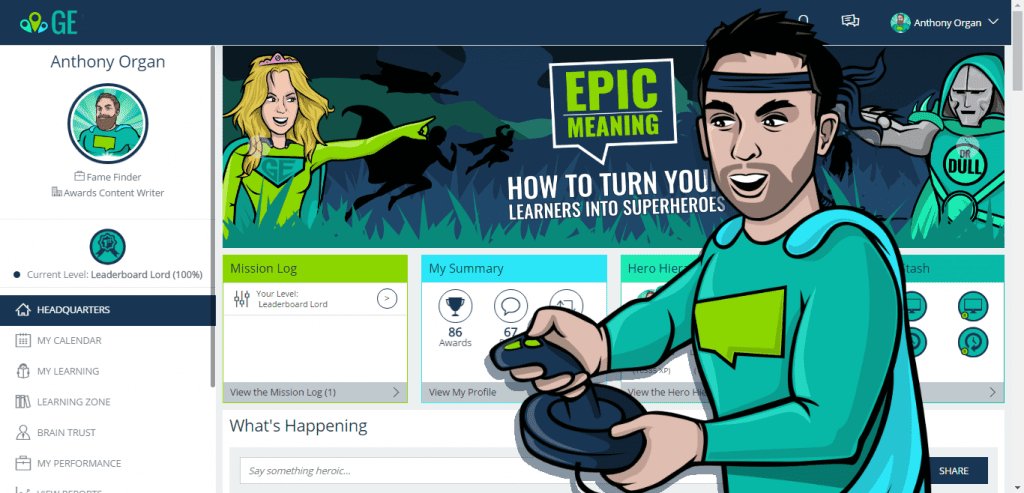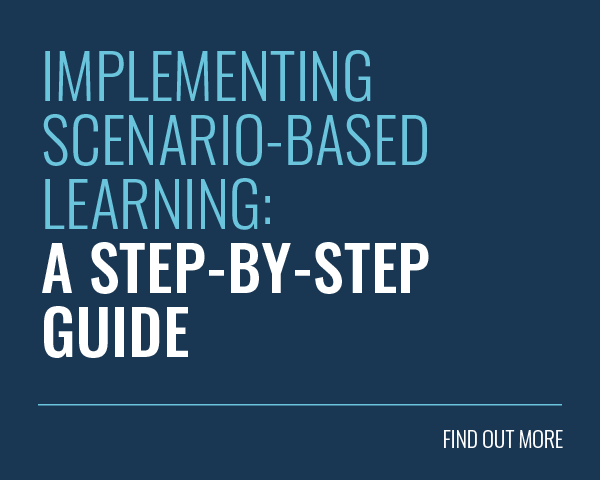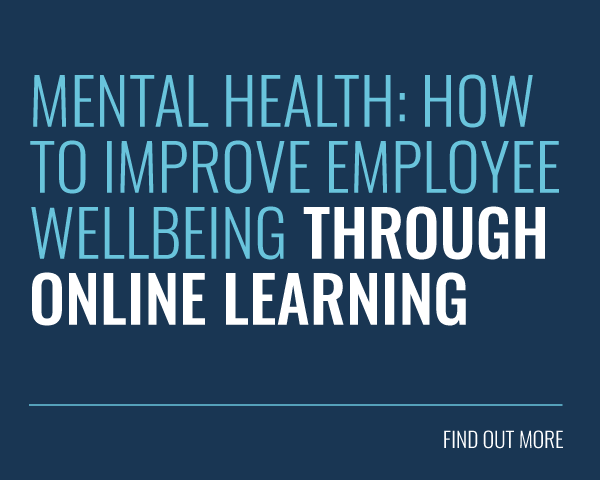
In 2013, I attended a gamification workshop in London hosted by Gabe Zichermann. One of things that really blew my mind was his framework for measuring user engagement. Even now, three years later, this is something I can’t stop talking about!
It shouldn’t shock anyone to hear that engagement is the most important thing in training. When you look at the number of training initiatives that fail because they couldn’t get the learners’ buy-in, the fact speaks for itself.
I still can’t believe it when I hear about companies rolling out the same dull training without even a thought for an engagement strategy.
Let’s face it, engagement is the super-secret sauce to nailing your training initiative and without it your people won’t:
- Log on to the LMS to do their learning and get more awesome
- Return to the LMS to learn some more and kick even more ass
- Have anything nice to say to their colleagues about the LMS.
When you think about the amount of time, money and effort that goes into training campaigns, it seems ridiculous (to me at least), that training managers don’t seem to learn from their mistakes! Anyway, I’ll get off my soap-box for now and get down to brass tacks – how on earth do you measure how engaged your employees are with their training?
Measuring User Engagement with LMS Reporting
When you’re measuring user engagement on your LMS, you need to make the most of your friends, the reporting tools. Any decent learning management system has a robust reporting suite. After all, most companies invest in an LMS simply because of its reporting capabilities (and not, I might add, for its ability to engage the learners!).
The reporting on a learning platform is usually concerned with:
 tracking how long people spend training
tracking how long people spend training- taking care of classroom training booking
- testing everyone’s knowledge
- creating assessments or reviews.
Notice anything? None of this says anything about how engaged the user is by the learning management system! What’s that all about?! The LMS is supposed to develop the organisation’s strongest asset: its people – the superheroes behind the scenes making everything happen. The reporting suite should give some indication on their reaction to the system.
Engagement on an LMS is the catalyst for real behavioural change. It shouldn’t just be some online directory where Mike, the new guy, can find the staff handbook; it should be the vehicle that rekindles his love of learning. That’s the only way to promote a real cultural shift. If your LMS doesn’t do this, then it’s not pulling its weight.
LMS administrators are a clever breed, and nine times out of ten, they’ll just know if the employees are engaged with their training or not. Everyone is bound to be on a scale between:
“I have no idea where the LMS is and I’m not interested in finding out”
and
“My LMS is like a learning community! I can’t go a day without logging in!”
So how does an LMS administrator understand how engaged the users are?
5 Metrics for User Engagement
Going back to that gamification workshop: Gabe spoke about 5 useful metrics for engagement. These add up to something he likes to call the E-Score:
- Recency: when did you last see users on the LMS? And more importantly, is this number going up?
- Frequency: how often does a typical learner access the LMS?
- Duration: when users come onto the site, how long do they stay?
- Virility: how many other learners have they told about it?
- Rating: when you ask users what they think, what do they say?
When you’re shopping around for a learning management system, these are the metrics that you should be looking for. At the end of the day, all the reporting tools in the world will mean nothing if nobody wants to use your LMS. It’s only by focussing on engagement that you can make sure your LMS actually pays for itself.

Using gamification on a learning platform is a great way to improve engagement, and social features can boost it even further. Trust me, we don’t just build these functionalities into our Academies because they sound fun! That’s not all though – these features can also let you measure engagement further. On a social LMS you can gauge engagement in several ways, for example:
- Volume of user-generated content: By creating discussion forums on your platform, your people can share their knowledge and talk about the things that they really care about.
- Number of badges earned: With gamification, everyone can earn badges for reaching milestones on their learning journey. At some stage, they’ll earn them all. If you’re getting requests for more badges, you’ll know you’ve nailed engagement!
- Activity on the social feed: Do the posts on your news feed have loads of likes and comments? If you have a thriving social feed, you haven’t just got an engaging LMS – you’ve found the holy grail – Real. Behavioural. Change! Go you!
 They say you can’t manage what you can’t measure – and I think there’s truth in that. Once you’ve started measuring engagement on your platform, you can see how you can make it even more amazing, more fun and more effective. We’ve already seen that this can turn your company culture around, but what else can higher levels of engagement achieve? Well…
They say you can’t manage what you can’t measure – and I think there’s truth in that. Once you’ve started measuring engagement on your platform, you can see how you can make it even more amazing, more fun and more effective. We’ve already seen that this can turn your company culture around, but what else can higher levels of engagement achieve? Well…
- Because the learners are more engaged with the platform, the skills they learn will have more meaning. This reinforces the message and makes for a more effective training programme.
- Because you’ve shifted towards a knowledge-sharing culture, you can kiss knowledge loss goodbye! Now, when people move on to pastures greener, they won’t take their vital knowledge away with them. It’ll be like they’re leaving a tiny bit of their brain behind! Gross.
- Allowing your users to rank and rate content means that the materials will always be relevant and up to date. You end up with this never-ending circle of learning improvement and it means that as soon as a process changes, your learners will be on hand to review the existing content.
Delivering eLearning, managing classroom booking and reporting on tests are great – don’t get me wrong. But in the 21st century your LMS needs to do more than that. It needs to delight your people and make them excited to learn new things. It needs to answer the age-old question: “what’s in it for me?”.
In fact, I’d go one further and suggest that it needs to change its name altogether! There’s nothing particularly exciting about a ‘learning management system’. We should all strive to create Engagement Engines instead. Luckily for you, we’ve created a whole handbook to help you build your own! All you need to do is click the button!






